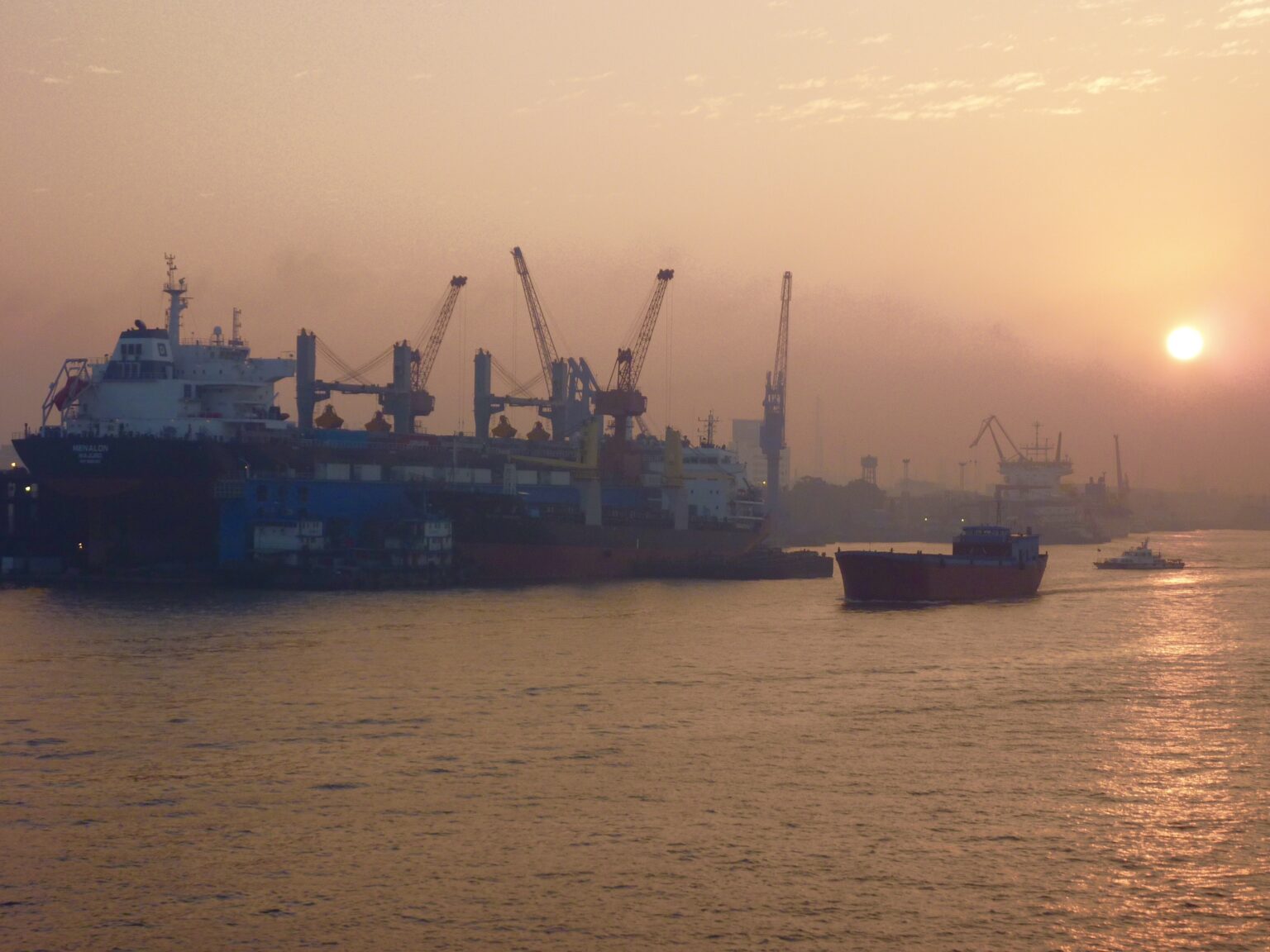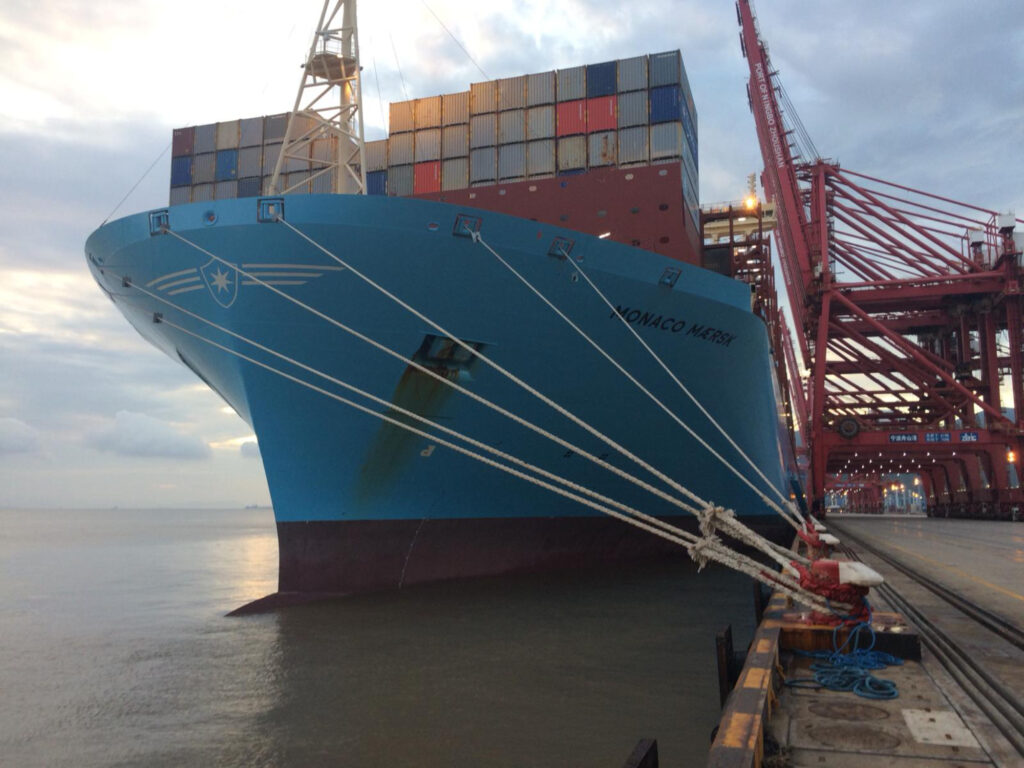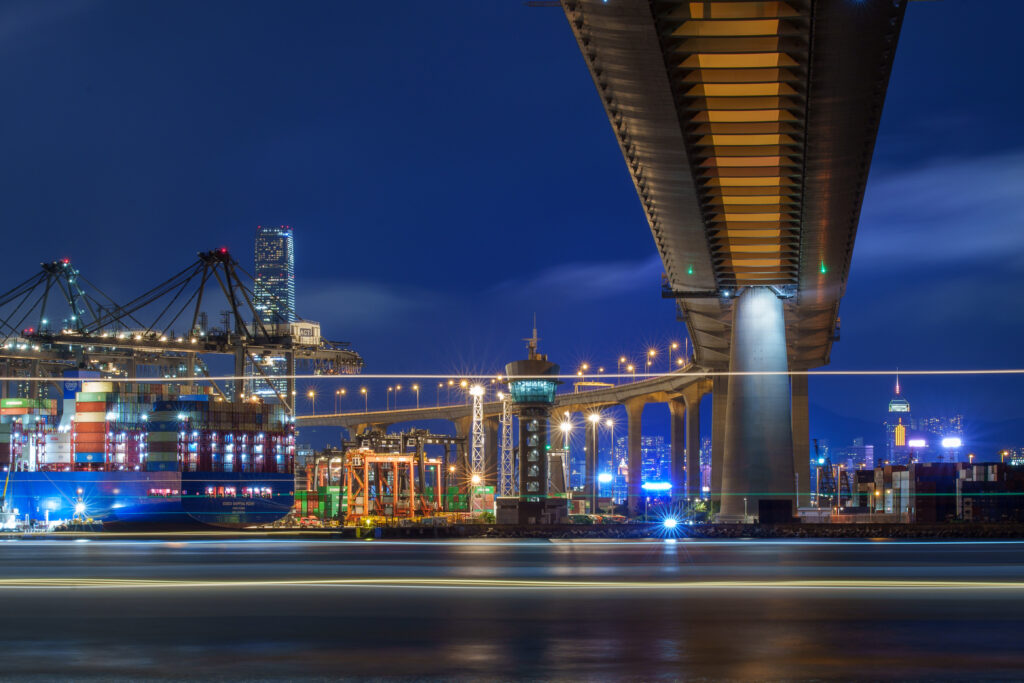Shanghai Goes Green
Over the past few months, there’s been a significant shift in China towards greener fuels, as John Rickards reports

While the Chinese conventional bunker market remains as competitive as ever, Shanghai has been aiming to carve out a firm niche for itself as a leader in decarbonisation efforts.
In March, Shanghai International Port Group held the inaugural meeting of the “Green Shipping Industry Alliance” in Lingang New Area, the newest part of the city’s free trade zone. The group consists of the Lingang New Area’s management committee, Cosco, SIPG, State Power Investment Corporation, China Classification Society and the Methanol Institute. The alliance is to serve as an open platform and cooperation mechanism to promote the application of green energy and well-to-wake sustainable low-carbon development in the shipping industry with a particular eye to green methanol and ammonia adoption, something the port is particularly keen to promote. Shanghai is the site for the country’s pilot project in ship to ship green methanol bunkering and in April, completed China’s (and Asia’s, SIPG said) first ship-to-ship refuelling, of the 16,000 TEU Astrid Maersk at Guandong Wharf in Yangshan Port Area.
According to Chen Jinshan, the Lingang New Area’s management committee director, basing the group in the free trade zone will help draw international cooperation and allow for a more “innovative development environment”.
Not long after, SIPG signed a cooperation agreement with Hanxin Shipping to improve green methanol supply both for Hanxin’s ships and for Shanghai in general. Hanxin has nine 9,000 TEU methanol-powered container ships currently under construction, scheduled to be delivered from 2025 to 2026. The two sides will jointly discuss the possibility of providing long-term ship clean fuel procurement, supply and refuelling services for the future LNG or green methanol dual-fuel fleet of Hanxin, to jointly promote the realisation of carbon reduction goals and promote global shipping cooperation in renewable fuels. SIPG said it would also accelerate the construction of Shanghai Port Green Energy Centre, and further build a low-carbon energy hub in the Asia-Pacific region, to provide efficient and reliable energy supply for international shipping companies.
In July, SIPG also announced it was launching a green energy trading platform for hydrogen-based fuels with Shanghai Environmental Energy Exchange, Shanghai Lingang Green Innovation and Guohua Investment Hydrogen Energy Company. The aim, group chairman Gu Jinshan said, was to accelerate uptake of and availability of green hydrogen-based fuels. The trading platform will be based in Lingang New Area, and will cover green hydrogen, green methanol and green ammonia, as well as green hydrogen certificate trading and data services, to ease distribution and availability of hydrogen-based green energy.
June saw bunker supplier Chimbusco sign a distribution deal with producer Bairin Zuoqi and Cosco’s energy and logistics arms to sell up to 200,000 tonnes of green methanol to be produced at a new wind-powered plant in Chifeng, Inner Mongolia. The 500MW plant will produce methanol for Cosco to transport and store, and Chimbusco to offer to ships. In a statement, Chimbusco said: “The signing of this strategic cooperation agreement further promotes the production, transportation, warehousing, fuelling and use of green methanol across the whole industrial chain. The three parties will give full play to their respective advantages and take the green methanol supply chain as the entry point to further expand the field of cooperation.”
Shanghai has also seen in late May its first offloading of shipboard-captured carbon from Evergreen’s 14,000 TEU Ever Top, the first ship to be fitted with a CCS system. According to SIPG, two months of sea trials, the capture rate of carbon dioxide by the system was over 80%, and the purity of carbon dioxide captured was over 99%, both meeting the design and classification requirements the amine-based system had been under. Shoreside reception for captured CO2 is one of the main practical limitations for CCS use at present, and SIPG described the unloading process as “complex” and “cumbersome”, needing careful control, eventually taking four hours to complete.
There are valid questions over the use of CCS versus reducing emissions by changing fuels and operational practices, but as a transitional step it’s certainly encouraging that the practical hurdles to handling CO2 output in port are being cleared.
For all the good work Shanghai and other ports and industry bodies have done to promote renewable fuels, conventional HFO will remain dominant for a long time to come.
Zhoushan is chasing hard on the heels of Fujairah for third spot in the list of major bunkering ports. Last year bunker sales topped 7m tonnes for the first time, up nearly 17% on 2022, which the Zhoushan Marine Fuel Association said was in part down to greater efficiency but also competition. Last year there were 19 licensed bunker suppliers active in the port, with private operators contributing almost half the total volumes supplied, up almost 25% year-on-year.
Overall, the association attributed its performance to “Zhoushan’s steadfast commitment to developing the bunkering industry, implementing reforms, fostering innovation in response to market demands, and proactive efforts to enhance infrastructure”.
That said, the association has been keen to point to its addition of China’s first offshore LNG bunkering and anchorage biofuel bunkering, which it says makes Zhoushan the first port in China to provide multiple fuel types at once across its 20-plus anchorages.
LNG bunkering was launched fully at the end of February, with the dual-fuel bulk carrier Gaoershan taking on 1,222 tonnes of LNG, after trial LNG bunkering in August last year at Qushan anchorage. Following the bunkering trial, the port went through a lengthy review and optimisation process to ensure smoother service once commercial bunkering began.
The port was shortlisted for trial supply of biodiesel in April, one of 22 sites across China picked to do so, and the only one in a free trade zone, having carried out its first bunkering operation with B24 biofuel in October last year.
The Chinese government announced in November 2023 a new programme to boost domestic biofuel use and direct sale to customers, including bunkers. The timing was impeccable because an anti-dumping probe was launched by the EU in December 2023 – not expected to be completed until well into 2025, though tariffs of up to 36% could be imposed by the time World Bunkering goes to press. With much of China’s biofuel production and UCO feedstock previously going to export, and the EU a key market in all fuel grades (the Netherlands alone accounts for over three quarters of Chinese biodiesel exports), providing local demand for hundreds of thousands of tonnes of fuel potentially not going to export any more is obviously a boost to Chinese biofuel producers.
The administrative committee of Zhejiang Pilot Free Trade Zone welcomed the port’s shortlisting, saying: “This will create new prospects in Zhoushan for advancing green and clean energy from biomass and establishing a significant bunkering centre for international vessels utilising renewable energy. The demand potential for biodiesel in Zhoushan Port is substantial. The current market demand for biodiesel fuel ranges between 300,000 to 500,000 tonnes annually. In the future, the biofuel bunkering sector is anticipated to generate numerous opportunities for resource alignment and trade.”
Zhoushan wants to establish biofuel production within the port, construct storage and blending facilities, and turn the port into a regional biofuel bunkering hub. It has plans to build a 400,000 tonnes per year biofuel plant in Dinghai district and has said it intends to have 100,000 CBM of biofuel storage in the port.
Shenzhen has the current record for the largest biofuel stem taken in China so far, however. In June, Chimbusco provided Cosco’s Xin Ya Zhou with 3,850 tonnes of B24 to beat the previous record set in Zhoushan last November. The company cited its local subsidiaries and Cosco’s keenness to reduce its carbon output and said volumes of this size would be a boost for adoption of such drop-in fuels: “Since the shipping industry has increased energy conservation and emission reduction efforts, the application of biofuels is still in the early stage. The largest supply of a single ship has laid a solid foundation for the regular supply of biofuel oil in domestic ports in the region.”
Chimbusco was also on the same biofuel shortlist as Zhoushan and been a proponent of B24 as a bunker fuel since carrying out its first supply last year.
“China’s shipping industry is in a critical stage of green transformation, with a huge potential demand for low-carbon fuels,” the company said. “From the perspective of overall domestic economic development, the supply of biodiesel in domestic ports has stabilised the good development momentum of the biodiesel industry and promoted the green and low-carbon transformation of the shipping industry.”
And while Hong Kong continues to slip down the list of busiest ports and has seen its bunkering market chiselled away by competition from mainland Chinese ports, the SAR is at least nudging forward with greener fuel options, with a number of suppliers now offering alternatives. One of the Chimbusco group’s sister companies, Chimbusco Pan Nation, became the first Hong Kong supplier to receive ISCC-EU certification for its biofuels, making its first delivery of the fuel late last year, and in May made the largest B24 fuel delivery in the territory and the first of a B24-HSFO blend, again to a Cosco vessel. The company provided 4,300 tonnes of the fuel to the Cosco Netherlands, which CPN said “highlights CPN’s dedication to sustainable development”.
“Since 2021, CPN has established a dedicated taskforce to conduct research on alternative fuels, including marine biofuel, which aimed at contributing to a more sustainable shipping industry, and completed supplying B24 marine biofuel to more than ten ocean-going vessels.”
While Hong Kong has lagged a long way behind on LNG bunkering and its first LNG terminal only opened last year, long after its regional rivals (and still won’t actually provide bunkering until the end of this year at the very earliest), late in 2023, the government announced plans to establish green methanol bunkering in the territory. In July, it went some way towards backing up that intention by introducing a bill to allow ships to use non-fossil fuels in HK waters, and to allow for bunkering with methanol, ammonia and hydrogen.
Writing for the government online, Secretary for Transport and Logistics Lam Sai-hung said: “The bill signifies the initial step of Hong Kong’s efforts to promote the use of green marine fuels. To further expand the utilisation of green fuels across Hong Kong, and to enable vessels to bunker green fuels in the city, it is imperative to establish the necessary supporting infrastructure and regulatory framework. The Hong Kong SAR government has thus commenced a feasibility study for providing green methanol bunkering for both local and ocean-going vessels and will promulgate an action plan for the construction of bunkering facilities and development of supply chains by this year, with a view to equipping Hong Kong to leverage the emerging development opportunities presented by green marine fuels, and establish the city as the preferred green marine fuel bunkering centre in the region.”
The move came just as the HK Marine Department launched a green incentive scheme for Hong Kong-registered ships, with those with an A or B rating on the IMO’s Carbon Intensity Indicator qualifying for the maximum amount. The scheme grew out of the same strategic policy decisions of late 2023, and if concrete action can continue to follow, Hong Kong could yet become a bunker port fit for the future.
“Hong Kong, China, as an associate member of the IMO, has been committed to supporting the organisation’s decarbonisation initiatives,” a Marine Department spokesperson said. “Although various green incentives have been introduced by other flag administrations, so far none of them has introduced a CII-related green incentive. Hong Kong will be the pioneer administration supporting the IMO’s green shipping policy on the CII. The measure will help promote the image of the HKSR as a green fleet and reinforce its brand in the international maritime arena.”
Image Caption: Shanghai is positioning itself as a leader in Chinese greener bunkering
14/09/2024

Image Caption: Government policy has shifted since the start of the year to greatly encourage biofuels
Image Credit: IMO/CC-BY

Image Caption: Hong Kong has lagged in some areas, but new proposals could see it make up ground in future fuels
Image Credit: RC Bellergy/CC-BY
get
in touch

Constructive Media
Constructive Media
Hornbeam Suite
Mamhilad House
Mamhilad Park Estate
Pontypool
NP4 0HZ
Tel: 01495 239 962
Email: ibia@constructivemedia.co.uk

On behalf of:
IBIA London Office
Suite Lu.231
The Light Bulb
1 Filament Walk, Wandsworth
London, SW18 4GQ
United Kingdom
Tel: +44 (0) 20 3397 3850
Fax: +44 (0) 20 3397 3865
Email: ibia@ibia.net
Website: www.ibia.net

Emails
Publisher & Designer: Constructive Media
ibia@constructivemedia.co.uk
Editor: David Hughes
anderimar.news@googlemail.com
Project Manager: Alex Corboude
alex@worldbunkering.net
